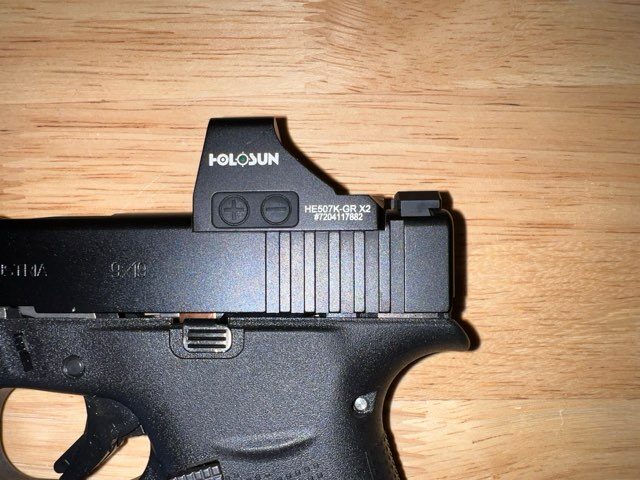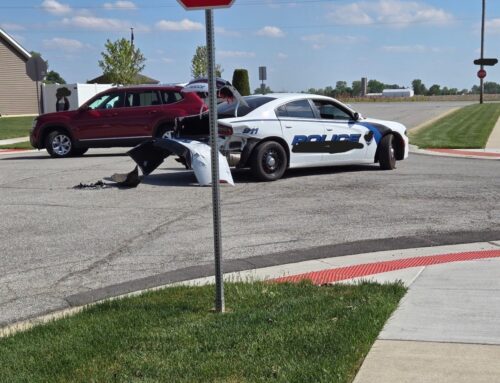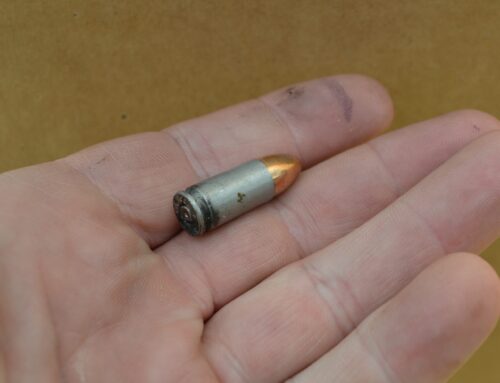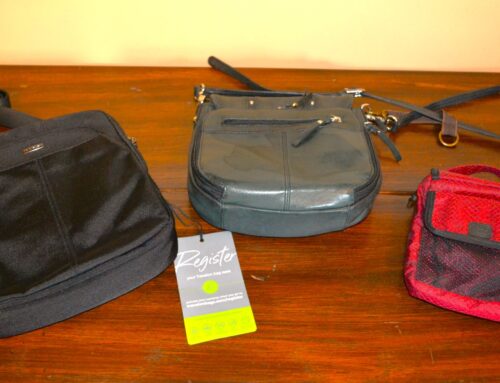“Most suffering comes from a failure to adapt and a resistance to change.” – Debasish Mridha
Holographic and “red dot” optics for rifles entered common civilian usage in the mid-2000’s. I was dragged kicking and screaming into acceptance – my reluctance was due to reliability issues and battery dependence. I also have a strong opinion that all gun owners must not only know how to use iron sights, but should practice with them regularly. Red dots make it incredibly convenient to ignore iron sights – so much so that we often see rifles without them!
Eventually, I mounted an EOTech on a rifle to see what the hype was about, and with only a minor amount of range time it became quite obvious that target/sight acquisition was markedly faster. Over the years design improvements and better battery life have made me a staunch advocate of such sights, and consider red dots mounted my battle rifles as standard equipment.
Of course, co-witnessing iron sights [sights that can be viewed and used through the window of the optic] are mandatory as my rifle mounted red dots have not been without issue over the years. Quick detach mounts are also a must in the event of catastrophic failure or frosting over of the lens. I want to be able to get the optic out of my life should it prove non-serviceable to the point of blocking out my iron sights.
However, I’ve found that the benefits far outweigh the downside, and they’re here to stay!
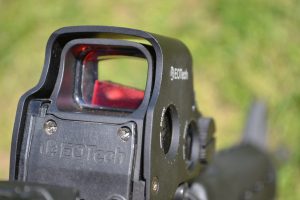
What do we mean by “catastrophic failure” of a sight? Here’s an example – the internals of the sight come apart and inconveniently lodge themselves in the window. Quick detach mounts are a must!
Pistol RDOs
Enter pistol mounted red dot optics (RDOs).
Once again, I’ve been dragged kicking and screaming into using them, but, the results (for me) haven’t been quite as satisfactory.
Here’s my thoughts, thus far.
Mounting (Engineering)
Mounting a RDO on a pistol has a number of potential and compounding problems. Some are shared with rifle optics, but many are unique.
The first being how to attach it. When mounting directly to the top of an auto-loading pistol’s slide, the RDOs are simply too high (in most cases) to allow for any kind of co-witnessing with iron sights. Yes, sometimes this can be remedied by swapping out the factory iron sights for “suppressor sights” (taller front and rear sights designed to sit above the tube of an attached suppressor.) But, even then some models of RDOs are still sitting too high for practical use.
To address this, milling the slide down where the optic is mounted has become the preferred practice. This allows most RDOs to be lowered to a reasonable point for both iron (oftem, high suppressor-style) sight usage and daily carry. A bit of a cottage industry milling slides was created for gunsmiths when RDOs were first introduced – but, most manufacturers of auto-loading pistols are now offering “optics ready” models with a pre-milled slide as standard equipment. Stand alone replacement slides are also available.
A few manufacturers have been able to lower the profile of the optics so the stock sights will co-witness with the stock iron sights – that is the preferred set up.

A co-witnessing dot. Note: The dot is actually green in this case. Many manufacturers offer red and green as options, as those with astigmatism have trouble seeing the red.
Mounting (Mechanics)
The mechanics of mounting pistol optics is a science in itself. Proper torque and thread locker, as-well-as mounting screw type, screw preparation (cleaning), and length are all imperative. On top of all that, we have the “adapter plate” issue.
There is no industry standard for the sight mounting screw spacing pattern (often referred to as footprint.) For example, Trijicon has proprietary spacing only found on their sights. Many manufacturers of optics (as well as firearms, like Glock) are offering adapter plates to facilitate mounting of multiple sight screw patterns to all slide mounting screw patterns. This not only raises the height of the sight, it adds two more screws to the affair, thus doubling the potential mounting failure points. Direct mounting to the slide is the best way to go. And that can be accomplished through a competent gunsmith should your sight not match up out of the box. New holes and threads can usually be machined, but this isn’t a “user level” endeavor.
There are not enough people behind the counter of gun shops, or even pistol smiths, who are adept at proper mounting. Ret. Police Chief Jeff Chudwin has actually developed a training class specifically for teaching students how to properly mount RDOs on pistols – yes, there’s actually that much to it!
It’s become common place to observe students arrive at the range carrying an RDO equipped pistol (as their defensive sidearm!) that has the sight mounted improperly. Everything from loose to backwards! When discovered, the general reaction by the owner amounts to some form of “Is that important?” Well, Skippy, only if you think your life is.
Auto-loading pistol RDOs are attached to a moving part. They sustain not only the shock of ignition and recoil, but also that of the slide slamming rearwards and then back into battery. Imagine an optic mounted to the bolt carrier of a rifle. Yes, the optic itself needs to be robust, but attachment methods are equally as important!
Last comment on mounting: The smaller “pocket guns“, like the Glock 42, offer few options when it comes to RDOs. In the case of the 42, the rear sight must be completely eliminated in order to mount an optic without obstructing the ejection port, thus offering no co-witnessing option.
Most optics are designed to mount on full size and compact pistols, not the sub-compact and micro types.
Zeroing
“What? We have to zero our pistol optics?” Yes!
Once RDO sights are properly mounted, they need to be zeroed. [Zeroing is the act of adjusting the optic’s dot to intersect with the pistols point of impact at a chosen range.]
Chief Chudwin’s thorough testing has him convinced that a 10-yard zero is the best choice. I’m in agreement. At 25-yards we’re looking at around at under a 1” drop, and 1-2” at 50-yards – of course ammunition and barrel length will cause results to vary, but that seems to be the consistent results with common full-size and compact handguns shooting full-power defensive rounds. For all intents and purposes, we’re point of aim/point of impact from 1 to 50 yards shooting 9mm +P. Target shooters may balk at that drop assessment, but we’re trying to win fights, not matches.
For the typical citizen involved gunfight, the idea of a 25-yard shot is on the fringe of possibility. It’s not that it hasn’t happened, or couldn’t happen again, it’s simply not what I would base zeroing on. However, I’d still want to know what drop, if any, I’m going to be subject to – that’s why we should all be testing our pistols.
Truth be told, the vast majority of pistol carriers in the US aren’t skilled enough to make 50-yard shots with any consistency. So, before we all worry ourselves with that, perhaps we should focus on mastering 10-yards, first.
I’m much more concerned about dead on close (3-5 yard) range brainstem shots than I am a couple of inches in a VCA’s thorax at 50 yards. The 10-yard zero works fine for both.
Batteries
No matter what has been claimed by manufacturers, some pistol RDOs will go through batteries quicker than an optic specifically designed for a rifle. Battery brand and type, weather conditions/exposure, and battery expiration date at time of installation all play a part. “Shake awake” models that are carried for defense are in a constant state of on/off as the wearer moves. Daily carry is far more abusive to battery longevity with such sights. And brightness adjustment will also cause the life to very, as well as range usage.
As a rule of thumb I’d suggest changing carry gun RDO batteries every 6-months, at the least. With many RDOs, this is a hassle. The original Trijicon RMR requires removal of the sight as the battery is accessed from the bottom. Which means mounting screw torque will have to be reset, and the gun will require re-zeroing. It’s not a “quick, a second” operation.
I don’t own any rifle red dots that require removing the optic for battery replacement. As one who travels frequently, adding an optic to my carry gun that requires it’s removal for change of the battery, followed by a zero conformation, seems like bad idea when it goes dead overnight at the hotel.
Holosun makes their SCS, which is a solar panel equipped model that contains a rechargeable battery. It’s a slick set up. Added bonus: it is designed to sit low and offers co-witnessing with stock iron sights on pistols equipped with milled slides. Cures a number of problems. Other manufacturers are also producing solar/rechargeable battery sights. However, I do wonder how that works concealed under one’s shirt all day and night, day-after-day…or tucked into an off-body purse where it never sees light of day for months.
Holosun claims a 20,000-hour battery life on their SCS, so changing it is not quite the issue other RDOs have, and it has a ‘low battery” indicator that is supposed to come on a few days before the battery goes dead. And, yes, the sight will work strictly off the solar panel from sunlight and ambient lighting (on a low brightness setting) in the event the battery is dead. They are certainly doing their best to make their sight fail-safe, which I applaud.
My caution is to those who never shoot their carry guns, or even perform a daily chamber/systems check…which is far more Americans than any of us want to imagine. If you haven’t un-holstered your gun (or removed it from it’s off-body container) in the last 6-months, RDO’s might not be for you…especially if you work nights.
Perhaps I’m over-thinking all of this, but, someone has to. Lives depend on it.
Quick Detach (QD) Capabilities
None, that I know of, for pistols. I’m sure someone is attempting it, but as of now, I’ve not heard of any practical QD being offered. If there is one somewhere, I can’t imagine it accomplishing much but raising the height of the sight and adding bulk to the entire affair.
What this means is that in the event of catastrophic failure, the optic will be blocking the iron sights from being used. Perhaps at some point a manufacturer will include a slot on the top of their sight hood, like a snubnose revolver rear sight, to be employed under extreme emergency? Just a thought…
[I was informed by a student after publication that there are a couple of sights which have a course mechanical sight included in the top of the sight hood. Something to consider when shopping for an RDO.]
Brightness Adjustment
A point we make to our rifle students pre-night shoot is that as the sun sets and darkness falls they’ll need to check their optic brightness every few minutes and adjust as necessary. This will occur at least 10x from dusk till full dark. When the dot is too bright, its all you see. The dot “bleeds” and washes out the entire screen in the darkness, thus constant adjustment until night sets in.
Adjustment on rifles is simple – the rifle is open carried, muzzles can remain pointed down while pressing buttons and viewing the dot.
Not so with pistols! In most cases, pistols would have to be drawn, or at least unconcealed, to tend to the optic. The idea of continuously having a properly adjusted brightness on a sunny day walk through the parking lot into the dark movie theater, then back out into a streetlamp lit parking lot, is a pipe dream.
Some RDOs allow for programing of brighter and darker dot settings for different lighting conditions. That’s all well and good – I just don’t envision the time to press a button on the optic when under attack. There are other’s that claim a “smart technology” that adjusts it automatically…well, perhaps. I’m not sure how it guesses the user’s needs, or how the user can guess what the lighting will be like during their next fight when trying to program sights that offer the option. It also presents a problem when the sensor technology isn’t reading light from the exact place you’re aiming. Trijicon claims to have solved that, but the sight is in the $700-800 range.
Rifles are carried for known threats. Pistols are carried of unknown threats/immediate emergency defense. I want nothing in need of situational adjustment on my emergency defense pistols. Of course, I might find the perfect RDO tomorrow and change my mind.
RDO Shooting Technique
The advantage of the dot is that it eliminated the need to align a front and rear sight. Instead of 4 points (eye, rear sight, front sight, target) needing to be in alignment when the bullet leaves the barrel, we’ve reduced it to three.
But, more importantly, we’ve removed the rear and front sight from the sighting plane, and changed to a downrange focal point.
While we are aligning sights, our eye(s) are only able to focus on one point in the plane at any time. Many of you may remember as new shooters when your teacher kept repeating “front sight, front sight” to you as you were firing shots. What is often left out of that well intended advice is what “front sight” actually means.
When we have our eye competing for the attention of a rear and front sight, as well as a target, we can only have clear focus of one. The idea is for your target and rear sight to be a bit blurry, and the front sight to be clear. All we’re doing is deciding on which one of the three to focus on. If we were to choose the rear sight, we’d lose the front sight and the alignment of the sights. If we choose the target, we’ll lose the sights altogether. Thus, we opt for the front sight, as it’s the most proficient way to keep all 4 points in alignment.
There’s a problem that arises in aging eyes that I’m sure many reading can attest to, and that’s Hyperopia – otherwise known as farsightedness. Simply put, one can no longer see the front sight clearly.
Generally, we try to fix it with reading glasses or bifocals. That becomes a problem when we need to don protective eye wear. But, safety glasses have become less of an issue with most impact rated eye wear as manufacturers are now providing their products with one’s prescription installed. However, this still doesn’t help us when the gunfight occurs and our glasses aren’t already on.
RDOs are proving an answer, and it’s based on the way they’re used.
The technique for sighting with RDOs is counter intuitive to those of us who have been shooting with iron sights for decades.
Instead of “finding the front sight” and adjusting it with the rear sight to target alignment, we find the target and bring the dot on to it (or dot to target.) This means that our focus remains down range for the entire process. Our eyes should not “focus” on the dot, but rather the target with the dot superimposed, the dot being “blurry”, but because it’s not subject to light and shadows like a front sight, we really don’t notice. It’s just a dot on the target.
For the farsighted, this is a godsend!
For me, it’s taking a lot of getting used to. My right eye wants to focus on the dot
I’m still not shooting faster [by faster I’m referring to first shot sight/target acquisition] with them as it’s not my “go to” sight. To get faster, I simply need to beat my eyes into submission with 1000’s of repetitions…which I’m not prepared to do, yet. Why? Because when I make the eventual change to an RDO, I will have to equip all of my carry guns with them. I’m not yet ready to commit to the expense.
As of now, I’m the only member of my family that didn’t need glasses at 40, and I still don’t at 55. Of course, that could change tomorrow. Thus, I’m doing my best to keep up with the technology and techniques, just in case.
But, for those who find themselves struggling with front sight focus, the RDO is something you should try. It very well may be the answer!
Rifle vs Pistol RDOs
One might be asking what the difference is with the sight technique between rifles and pistols? Well, there’s not. If one is using a rifle red dot correctly, focus on the target and superimpose the dot, just like the pistol RDO. The difference in presentation.
When we shoulder rifles, the dot is thrown into the sight plane and is hard to miss. The rifle has (at least) 4 points of contact (hand, hand, cheek, shoulder), and it locks our eye(s) to the rifle as one.
With pistols, it’s reliant on a consistent drawstroke that brings the dot into the plane, all while hanging out at the end of our arms. The dot is also contained in a tiny window mounted in a small hood which is very easy to mis-align on presentation when one is still struggling with the focus on the target concept. Although, it’s not really more of a struggle than any new shooter has trying to bring iron sights to their line of sight.
However, with the dots generally sitting a bit higher than sights, it creates a situation for shooters like myself who have become accustom to finding my sights in the same place after 10’s of thousands of presentations. There’s a learning curve, as well as a neural pathway rewrite, for iron sight pistol users that isn’t as prevalent with rifles.
With rifle dots, we can still “get away” with a focus on the dot, as they sit mounted somewhere between our front and rear sights. Yes, we should be focusing out at the target, but it’s not mandatory in order to get results. One can focus on the dot as if it’s a front sight, as we are generally shooting at longer distances with rifles.
And, one might argue that foregoing a target focus on a rifle red dot allows you to switch back to iron sights when needed without a hiccup. There’s probably some validity to that point, but then we’re abandoning one of the primary positives of the red dot, which is being able to track the badguy down range in great detail, and see what’s going on around him.
Speaking of badguy downrange, the last argument for red dots I’ll mention is related to target focus during stress/tunnel vision. Many who have studied it far more in-depth than I have suggested that trying to focus on a front sight while an attacker is charging you is an effort in futility, and that under stress we become “target fixated.” Perhaps – like most of what we do, I’m on the side that says we can stress inoculate, and with enough repetitions and rehearsal, front sights can become as second nature as drawstroke or trigger reset. However, I will meet them halfway and agree that it could certainly be an issue for anyone who rarely trains…which is most who carry guns.
Of course, the same folks that don’t train are potentially going to fail a laundry list of other tasks during a fight that the addition of an RDO won’t make up for.
Conclusion
For completion shooters, the RDO is an obvious advantage. For those who carry daily, I’m not convinced they are necessary, or will even be put to use in the Tom Givens documented typical citizen involved gunfight which occurs at a distance of 3-feet. And, to be fair, iron sights probably won’t be much of a factor in those events, either. But, those fights still require proper draw, trigger press, an awareness of muzzle, and a flash sight picture, or at least proficiency sighting down the slide itself. …and all that is dependent on being able to access and deploy a pistol while someone is making direct contact during our attempted murder.
I’m also curious how many well-intended folks are buying and carrying these devices when they still don’t know how to operate a trigger correctly? Much like how lasers are marketed, the insinuation is that these will somehow make us better shooters. What they may do is give good shooters better accuracy at distance, as well as add speed. What they will not do is improve the shooting of the convulsing, trigger-jerking, untrained shooter. In the case of the later, it’s as productive as selling someone who can’t golf a set of $3000 clubs. The clubs aren’t the problem, the lack of technique is.
But, as Americans, we like to “solve” problems by throwing money at them. And, as of now, there is a metric-ton of cash being thrown into pistol optics. Cash, which in some cases amounts to the cost of a second gun. Cash, which might be better spent on a weapons retention and disarm class.
RDOs, for better or worse, are not going anywhere soon. All of us need to get our hands on a pistol equipped with one. As John Farnam is quick to point out, we may not have OUR favorite gun during our next fight. It may very well be the gun we have handed to us, or be the one we picked up off the ground. And with each passing day, the odds of that mystery pistol possessing a red dot continue to increase. During a recent trip to a local gun shop we noted that half of the pistols in the display case were optic equipped, and close to 70% of the rest were optic ready.
We need to know how to run RDOs!
Lastly, technology is ever evolving. By this time next year every single concern I’ve voiced may be solidly addressed. And all of you might then be laughing at people (like me) who still haven’t switched to the new “automatic plasma-projection, AI-controlled, unobtanium-powered, super sight.”
And you’ll probably be submitting your comments to me via neuralink while I’m sitting at the eye doctor’s office complaining about not being able to see my front sight…as well as “those darn kids who won’t stay off my lawn!”
If you’ll excuse the pun – we shall see!
“Single facts almost never slay worldviews, at least not right away.” – Stephen Jay Gould

